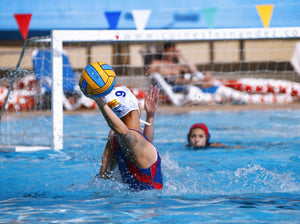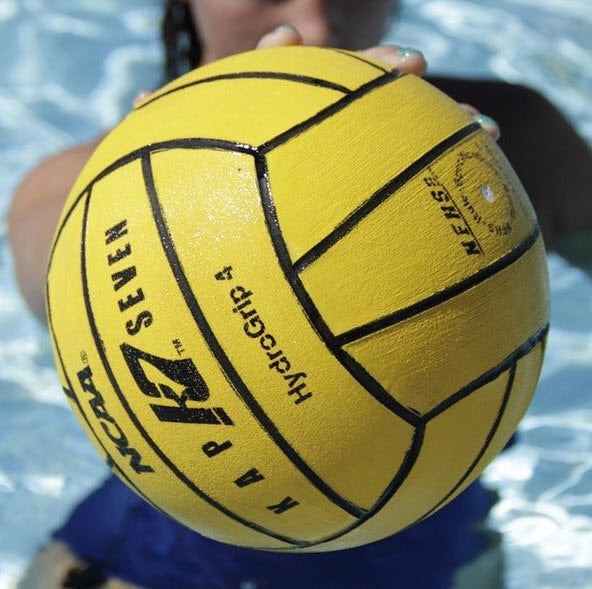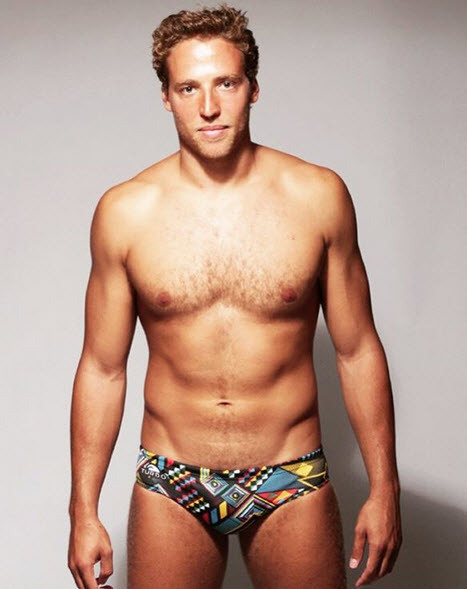How to Quickly Recover from Water Polo
 The faster, more efficiently you can recover — whether from a hard practice or from a long tournament — the stronger your body will be. This is because during recovery, your body repairs the damage you’ve done with those grueling swim workouts. Recovery is when you finally reap the benefits of all your training. This guide is full of ways to speed your recovery after playing hard so you can get the most out of every workout.
The faster, more efficiently you can recover — whether from a hard practice or from a long tournament — the stronger your body will be. This is because during recovery, your body repairs the damage you’ve done with those grueling swim workouts. Recovery is when you finally reap the benefits of all your training. This guide is full of ways to speed your recovery after playing hard so you can get the most out of every workout.
Rest vs. Active Recovery
Simply resting, or not working out, is a very good way to give your body a chance to recover. Rest days are crucial not only for physical health, but also for mental health! Your body and mind need you to take days off if you are going to train to your highest potential. But, while sitting around may seem like it’s helping, it’s not always the best or fastest way to recover.
Active recovery — such as easy swimming or lightly tossing the ball around — is a way to help your body heal and rebuild itself. This isn’t the only form of active recovery, though. Gentle stretching, low-intensity cross-training, and low-intensity weight training are all examples of active recovery.
Take the time to swim some easy, quality laps at the end of every single workout. The relaxed, gentle movements will give your body a chance to process and break down the stress chemicals it produced during the harder parts of your workout. This will help your arms relax after shooting, as well as get the lactic acid out of your overused legs. To understand why this is important, let’s look at what happens if you skip your warm-down (not that you would ever do that, of course).
As soon as you stop working out, your muscles’ demand for oxygen is reduced and your heart rate slows because your heart does not need to circulate your blood as quickly. However, circulation serves more than one purpose. Your blood doesn’t just bring oxygen and nutrients to your muscles. It also transports the waste products leftover from the metabolic (energy conversion) process to your body’s organs, where they can be broken down and purged from your system.
If you skip your chance to get some active recovery at the end of your workout, it can take your body much longer to filter out the waste products and to replenish its energy stores.
Active recovery keeps your blood moving — and transporting nutrients and waste products. The key is to keep your heart rate up, but not work so hard that your body creates more waste products than it can purge. Always swim at least a few warm-down laps.
As soon as possible after your practice, eat a snack. During your workout, your body burns through a lot of fuel, which it stores in a variety of forms. After your workout, there is a small window of time — as few as 15 minutes or up to an hour — during which your body will efficiently replenish your carbohydrate stores. Once that window closes, your body suddenly becomes inefficient at replenishing them.
If you only practice two or three times a week, your body probably has enough time to re-fill its gas tank completely before the next practice without the need to eat immediately after workouts. However, if you practice every day (or twice a day), eating an appropriate post-workout snack is essential to making sure that your energy stores are replenished.
Also, it’s particularly easy for water polo players to forget about hydration. Even though you may not notice, you do sweat during practice. Make sure to drink something after your workouts. Again, there’s an optimal window of time after your practice during which your body is more efficient at replacing lost fluids. The sooner you drink something, the better.
Growth hormones, which are responsible for recovery, do their repair work best when you're asleep. Thus, try to get eight to nine hours of sleep every night. If possible, take a short nap at some point in the day. When is the right time to nap? Listen to your biorhythms and see what works with your schedule. Just remember, try not to take a nap too late in the day — otherwise it may throw off your sleep schedule when you want to go to bed that night.
If you usually workout in the late afternoon or evening, try to make time for some active recovery in the mornings. This is particularly important the day after a hard workout. If you usually practice in the morning, reserve a small part of your afternoon or evening for a recovery activity. Ideally, that activity would be 20 to 30 minutes of easy swimming, passing around the ball, and light eggbeatering. Avoid shooting and sprinting. Keep your heart rate in the low aerobic zone.
If going to the pool is a huge hassle, you have other options. You can do some light stretching, perform a few relaxing yoga poses, or take an easy bike ride. The goal is get your blood circulating and your body processing the garbage left over from your most recent workout. Active recovery is an essential part of a well-rounded training plan.
Massage benefits your health in a variety of ways. It stimulates your blood flow and movement of lymph fluids, helps prevent injuries, lowers your heart rate, and reduces your blood pressure. Yes, it will help your recovery (there’s a reason many elite athletes get daily massages during peak training). But, it will also help your overall health too. Find a sports massage therapist you like, and make a regular appointment… even if it’s only once a month.
Keep Tabs on Your Progress
In your training log, keep track of your recovery activities for a few weeks. Look for connections between what you do for recovery (what you ate, how soon after practice you ate, how much warm-down you needed/did, etc.) and how you feel at subsequent workouts. Don’t be surprised if you have more energy or feel stronger. That’s what recovery is all about.



